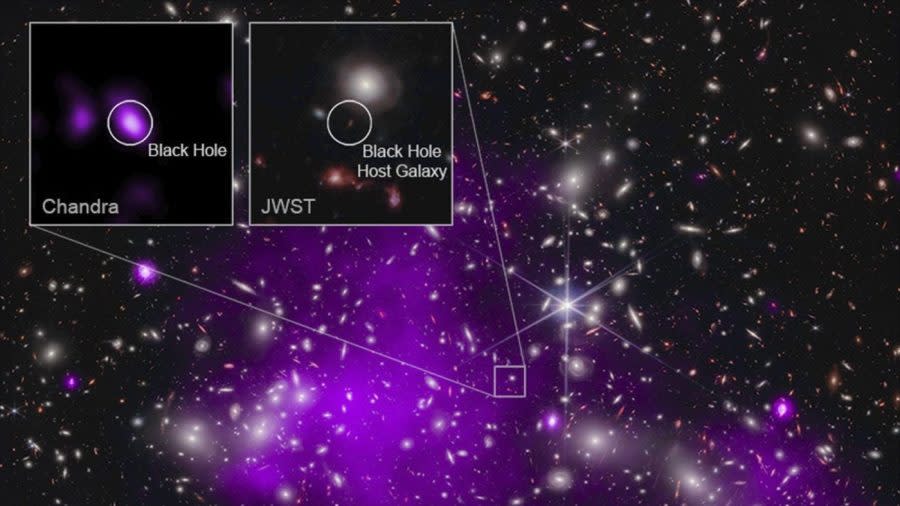Webb telescope finds oldest, most distant black hole

An international team of researchers used the James Webb Space Telescope to discover the oldest black hole ever observed, the team announced Wednesday.
The University of Cambridge, which led the team of researchers, said in a news release Wednesday that the newly discovered black hole dates from 400 million years after the big bang — which scientists agree is likely the event that brought the universe into existence more than 13 billion years ago.
But a black hole of the size detected would require at least 1 billion years to form, according to what the news release describes as “standard models.” Since the black hole could only have been 400 million years old when it was first observed, scientists must now think about new ways that black holes can form.
University of Cambridge professor Roberto Maiolino, the lead author of the paper, which was published Wednesday in Nature, described the findings as a “giant leap forward.”
“It’s very early in the universe to see a black hole this massive, so we’ve got to consider other ways they might form,” Maiolino said in the news release. “Very early galaxies were extremely gas-rich, so they would have been like a buffet for black holes.”
Maiolino credited the sensitivity of NASA’s Webb telescope with the new findings. Since Webb first launched in December 2021, NASA has been able to observe the solar system and various corners of the universe with newfound clarity and precision.
“It’s a new era: the giant leap in sensitivity, especially in the infrared, is like upgrading from Galileo’s telescope to a modern telescope overnight,” Maiolino said.
“Before Webb came online, I thought maybe the universe isn’t so interesting when you go beyond what we could see with the Hubble Space Telescope. But that hasn’t been the case at all: the universe has been quite generous in what it’s showing us, and this is just the beginning.”
For the latest news, weather, sports, and streaming video, head to The Hill.

